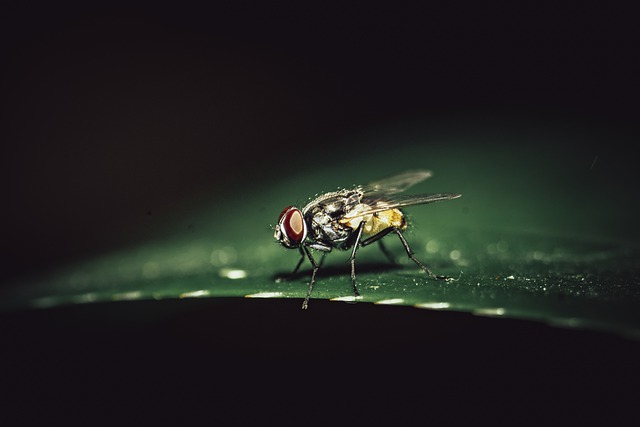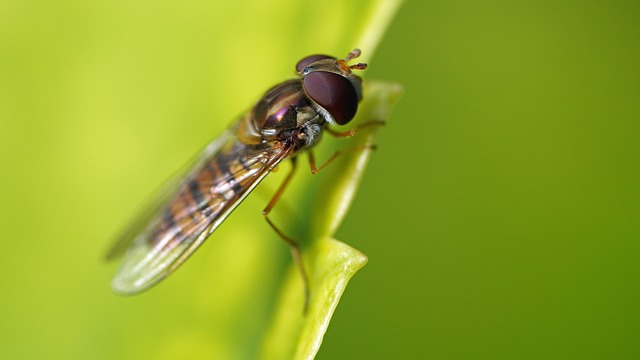Oh, I see you have a problem with tiny flying bugs attracted to and around light!
Have you ever wondered about the tiny flying bugs you can see when a light flashes near an area?
It’s somewhat annoying because you can feel the flying bugs moving around you once you cross that area, and you don’t want to contact them!
Important Note: If you're tired of pests and want a reliable solution, then you should definitely consider seeking help from a professional pest control company. DIY solutions can be effective, but if you're dealing with a significant pest infestation, you don't want to rely solely on DIY methods. Pest control companies typically don't charge huge fees. You can fill out this form to receive free quotes from the top local pest control companies, and compare the quotes and see for yourself. Then, finally, your pest problems will be eliminated for good.
However, we need to know why they are there and where these bugs come from to enlighten us about their habit, which annoys us every time!
We know they are almost everywhere, so we will help you deal with those flying bug problems in this article.
Why Are There Flying Bugs Near My Light?

Almost everyone finds it annoying when they see a lot of flying bugs near and inside the light, and it is frustrating seeing them fly around the light.
This situation is because of the insects’ interest in the warm environment, and most insects are interested in light and warmth.
Given that a light bulb provides both, the tiny flying bugs tend to the bulb and rest around it.
The tiny flying bugs you see around your lamp and light bulb are positively phototactic, which means their movement is in response to light.
Where Do These Flying Bugs Come From?
You may not notice it, but flying bugs can come everywhere. May it be from your garden, neighbors, or the bugs switched to a new home and found yours.
These tiny flying bugs can quickly repopulate as they can lay eggs even in the lawn or near the light, so they multiply quickly since the larvae will be raised in a warm environment, which is the light.
However, not all eggs laid near the light can survive because they can die out of dehydration. But eggs laid in the garden, plants, or wherever, can persist, which causes the multiplication of the flying dead bugs near the light.
You can also see some dead eggs inside the bulb or near the lamp because those eggs did not survive from extreme heat.

How Do Small Bugs Get Inside the Bulb?
I know it puzzles you how the small flying bugs enter the light. Sometimes, when your lamp is turned on, you can see the covering with black sediments inside, and you can’t just figure out what those are.
Well, those are the dead bugs that entered the lamp, and most probably, your light covering is defective, or it has even a tiny space where the bugs can enter.
Bugs cannot enter the light bulb directly because those lights are fixated to having an entire covering to distribute the light source; hence, the flying bugs can only enter lamps or lights with covers.
How to Get Rid of Small Flying Bugs Attracted to Light
- Keep away any indoor plants if you find the tiny bugs flying inside your house. Plants & trees are home to tiny insects, and once you turn off the light, they probably move to the plants and eventually reproduce. Thus, you should avoid putting indoor plants to keep them away.
- Close your windows at all times. Given that the flying insects are too small, even a tiny opening will be their way to get into your home.
- If the light source where you can find them is inside the house, you should probably shut all your windows all the time, may it be raining or not, because the more bugs can find your light, the more it will be frustrating on your part.
- Patch up your patio screens. If you find holes in your patio screens or the screen doors, you have to make sure to cover up those areas because the tiny bugs will find their way directly to your light.
- If the holes are already big, maybe it’s time to replace your patio screens. It is the best way to keep away the flying bugs since you cannot just run and catch them inside your house.
- Remove the light fixture. Light fixtures are not supposed to have spaces and holes for the bugs to enter, and if you see black sediments while the light is turned on, the fixture is probably not installed correctly, or it has a space for bug entry.
- Look for entryways, and make sure you can point them out. Clean the cover and once you put them back on, ensure that it is tightly sealed to keep the bugs from dying in the cover.
- Put fly traps inside and out of the house. Since the flying bugs are so tiny, they cannot get away quickly and stick to the trap until they die once they get near the fly trap.
- Fly traps are also the easiest way to get away from any flying insects, not only the tiny flying bugs near the light. Make sure to place the trap near the light so once the bugs come in contact, they will not get off the trap.
- Place a pail of water under the light. You know how insects love to reproduce in water, especially in stagnant water.
- However, even when the bucket of water you put is not stagnant, you will attract the weak, tiny, flying bugs to it because of the water’s reflection with the light. This way, the insects will drown in the water, reducing their number.
Final Words
These flying bugs attracted to light are truly annoying, and the only way to get rid of them is to fix entry points in your house.
If ever you find the tiny bugs outside the house, you can put the fly trap near the light source so they can stick in no time.
Also, remember, once inside, they can easily make their way into your kitchen, bathroom, etc., making it even more difficult for you to eliminate them.
So it’s better to take adequate measures before they become a menace.
Also, ensure to keep your plants clean and organized so the bugs outside your house won’t reproduce around.
Make sure to keep an eye on your curtains, blinds, windows, and screen doors because various flying insects can get inside, and they will eventually find their way to get into your lights.
